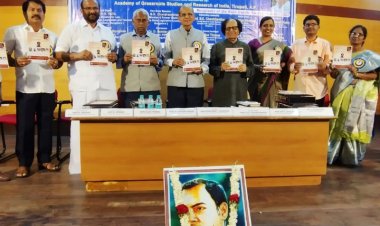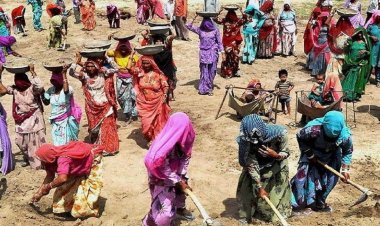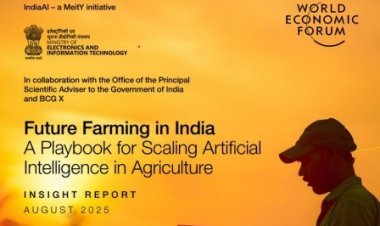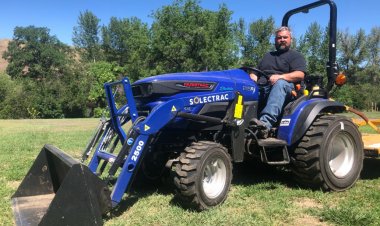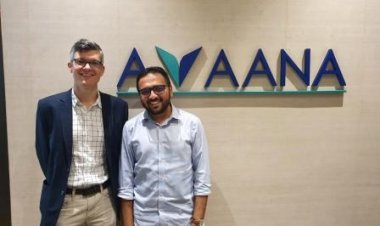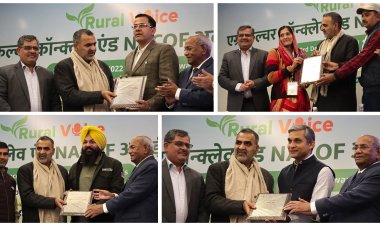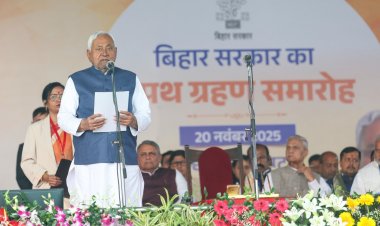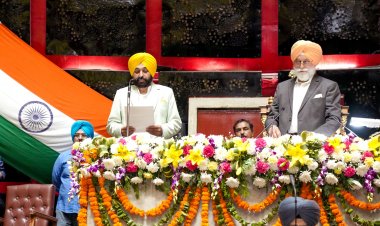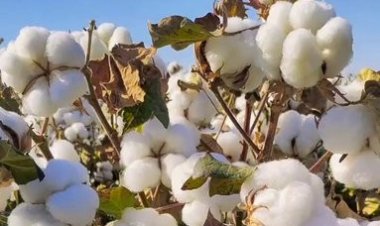Ground Report: A New Era in the Jaggery-Khandsari Industry with Tech-Savvy Entrepreneurs
The rapid increase in the number of sugar mills in UP threatened the existence of the jaggery and khandsari industry. However, the emergence of innovative entrepreneurs and advancements in technology offer the potential for its revival.
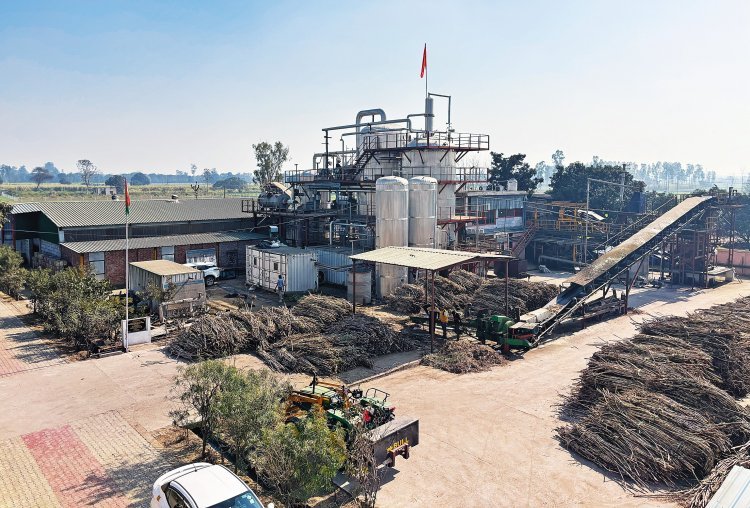
Sikandarpur, Jhinjhana (Shamli) & Fugana (Muzaffarnagar), Uttar Pradesh
When words like automation, computer control, panel, no human touch, no pollution, and smokeless are associated with the jaggery-making unit, people suddenly do not believe it, because in their minds conjure up the images of crusher, crusher and juice boiling in an open pan. This is the traditional way of making jaggery. This is the reality. Technology and new marketing strategies are opening a new path for the modern form of the jaggery industry. Technology is changing the perception of the jaggery industry which is seen as a polluting and unhygienic production process. Not only this, the quality jaggery products made about four decades ago which are chemical-free and retain their nutritional value are also making a comeback. Hygienic and attractive packaging and a wide range of products can increase its consumption among consumers in the coming days and can also create new entrepreneurs.
K P Singh, an established name in the field of technology in the sugar industry, is the chief executive officer (CEO) of the automatic and latest technology-based jaggery production plant Hans Heritage Jaggery and Farm Produce set up by his wife at Sikanderpur, Jhinjhana in Shamli district. Singh, who has about 40 years of experience in the sugar industry, has been the Group Technology Head at Balrampur Sugar Mill, one of the largest sugar industry groups in the country. A resident of village Unn in Shamli district, he shared with Rural World his views about jaggery production with new technology and setting up this industry. While taking us on a guided tour of the premises of Hans Heritage Industries plant, saying, “I have learned a lot in the sugar industry. Achieved it. Now my idea is to establish a modern industry in my village so that I can give back something to society. For this, I bought 10 acres of land in Oon so that this plant could be established there. But there is a sugar mill named Rana Sugar in Oon and as per government rules, a power crusher-based Khandsari unit cannot be established within a radius of 7.5 km of a sugar mill. Therefore, this plant was established by purchasing three acres of land in Sikandarpur.”

KP Singh, CEO, Hans Heritage Jaggery and Farm Produce
Singh says that I wanted to realize the dream of bringing a pollution-free and healthy product to the market by setting up a jaggery production plant through new technology. There is no water pollution in this plant nor do we burn bagasse. That's why there is no smoke. The entire process is automated, hence the jaggery made here is not only hygienic, apart from sucrose, minerals beneficial for health are also present in jaggery. All production is done through electricity received from the grid. For crushing sugarcane, four vertical rollers and crushers of 20 by 30 inches are used. Through this, a capacity of 250 tonnes per day was achieved. It can be taken up to 100 tonnes per day through an additional mill.
He explains that to make jaggery, the hot furnace is used for boiling sugarcane juice. For this, a temperature of 65 degrees Celsius is prepared through a heat pump. Steam of 105 degrees is produced through a mechanical vapour recompressor and hot water is produced at 110 degrees. Sugarcane juice is converted into jaggery in a step-by-step process through a hot water pressure pump and steam. Calcium bicarbonate is used to clean the mud and foreign material present in the jaggery and in this process the mud and foreign material remains at the bottom. He says that through this process we are achieving recovery of 16 percent jaggery from sugarcane. It contains 80 percent sugar and 20 percent non-sugar material, which contains most of the healthful minerals. He claims that the moisture level in the bagasse (bagasse) released after crushing in this plant is 45 percent, which is better than any sugar industry in the country. The entire process of running the plant is computerized and is controlled by a team of experts.
By using this modern technology of jaggery production, jaggery has been produced which meets better quality and health standards, but its marketing was not very easy. After starting the production in January last year, when Singh went to the country's famous Muzaffarnagar jaggery market with the first lot of jaggery, the commission agents there were not ready to buy. The reason for this was the color of jaggery which is dark earthy. At that time, the price of jaggery in the market was Rs 32 per kg, but due to the colour of the jaggery, the traders were ready to pay only Rs 26 per kg. On the fourth day, when a trader named Shahnawaz tasted jaggery in the market, he said that the jaggery which was made 40 years ago, is as coarse and granular as it was. There will be a market ready for your jaggery, so ignore the traders' advice and make this jaggery. Singh says, after a few days Shahnawaz came to the plant and said I will try to sell your jaggery. He sent 20 trucks of jaggery to 20 different cities in Gujarat for 20 days. Each truck contained 20 tonnes of jaggery and all the jaggery was sold there. However, due to the accumulation of stock of jaggery, the unit had to be shut down for about eight days.
Last year the price of jaggery ranged from Rs 28 to Rs 34. This year too, Shahnawaz is purchasing about 90 percent of the jaggery production but this year he is selling it in Punjab. So far this year, the price has ranged from Rs 28 to Rs 32 per kg. KP Singh is expected to a break even this year. The major part of the jaggery being made at Hans Heritage is made up of large cake pieces of jaggery which are sold in 26 kg packing. GST is applicable on jaggery up to the packing of 25 kg, not above that. Along with this, the company is also making jaggery and marketing it in small packs (as in the photo above). It contains half a kg and one kg pack of jaggery in nice packaging. Their shape is like chocolate. The strategy of better marketing of jaggery by adding sesame and some other beneficial products is also being implemented so that it can find a place on the shelves of big retail chain stores and can also reach the customers buying high-value products.
Singh says, our jaggery has not only met all the standards in the country in the pesticide residue test, it also meets the standards of 200 pesticides tested in America. 400 pesticides are tested in the European Union (EU), it also meet the standards there. But the interesting thing is that the companies making Chyawanprash in the country give preference to such jaggery because it contains up to 95 percent sucrose, which is prepared by mixing sugar. She is buying our jaggery for medicines. Another interesting fact is that according to Food Safety and Standards Authority of India (FSSAI) standards, jaggery should contain 90 percent sucrose whereas in reality jaggery contains only 80 to 82 percent sucrose. A new jaggery and khandsari unit has been set up by Freyr Foods Private Limited in Fugana village of Muzaffarnagar district, about 30 kilometres from Hans Heritage. Among the entrepreneurs who founded it is 60-year-old Bijendra Malik who has a master's degree in Agricultural Science. The other founders are Nischay Malik, an MBA from Cardiff University, UK, and Abhishek Malik, a food technologist. Freyr Foods focuses more on product innovation. It cost Rs 3 crore to set up a plant with a capacity of 150 tonnes per day. In this, six rollers are being used in two 3 by 2 crushers for crushing sugarcane. In this unit, jaggery, khandsari and other value-added products are being prepared through mechanization and manual methods.
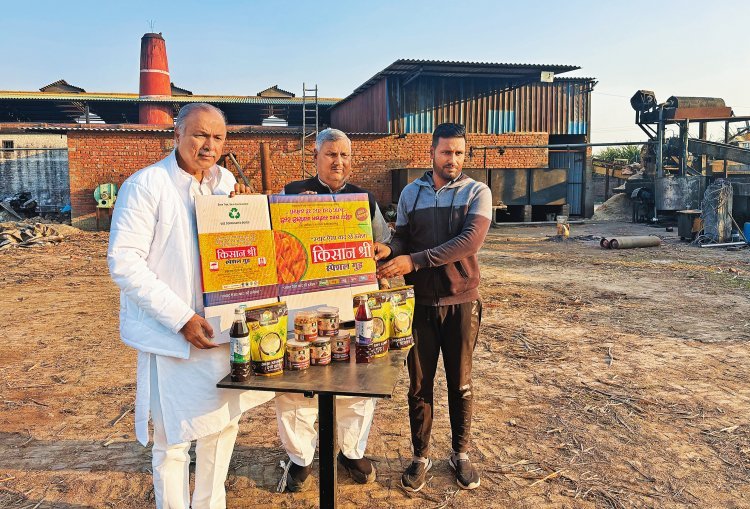
Yashpal Maik, Bijendra Malik, Abhishek Malik at Freyr Foods Private Limited
Bijendra Malik, a director of the company, says, we are producing jaggery and khandsari through open pan but we do not use any chemicals. During the process of heating sugarcane juice, the natural herb Shuklai extract is used to purify the juice. In the current crushing season, we have started crushing from October 20, 2023 and we are taking a recovery of 13 percent.
Yashpal Malik, National Coordinator of All India Jat Reservation Sangharsh Samiti, is the father of Nishchay Malik and it is he who has prepared the concept of this unit. Yashpal Malik told Rural Voice the entire process of the plant and said that here we are making products for retail and wholesale sale. Jaggery and Khandsari are sold in bulk under the Kisan Shree brand. Among the value-added products, they are making 9 products like Jaggery Chocolate, Jaggery Gram, Chai Masala Jaggery Powder, Immunity Booster Jaggery, Fruit and Nut Jaggery and selling them in attractive and hygienic packing. We are also making two types of vinegar. We aim to establish the jaggery industry as a health product industry. Along with Ayurveda, now modern health advisors are also talking about the health benefits of jaggery and this is a positive aspect to promote our industry.
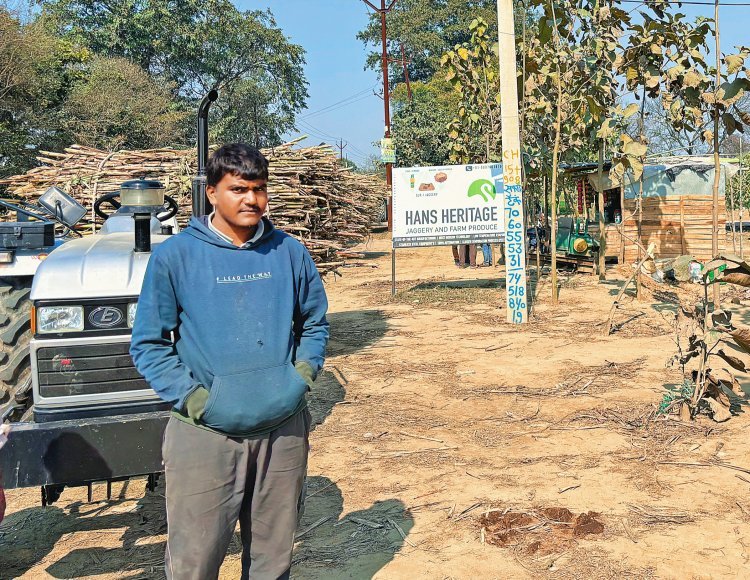
A Sugarcane farmer at Hans Heritage Jaggery Unit
Sugar mills are also facing competition on the price front of sugarcane. Ishwar Singh, a farmer from Sikandarpur who had come to supply sugarcane to Hans Heritage, told Rural Voice that by selling sugarcane here, he is getting a price of Rs 370 per quintal, which is equal to the State Advisory Price (SAP) of sugar. Hans Heritage is near my village, hence transportation cost and time is saved. Payment reaches my account on the same day. There is a provision for payment within 14 days for sugar mills, but in the wool and Shamli sugar mills here, payment has been delayed from six months to a year. In such a situation, Hans Heritage has come as a better option for sugarcane farmers. Rajeev, a farmer who came to sell sugarcane, repeats the same thing.
Singh says that last year we bought sugarcane at the rate of sugar mills and this year also we are giving the same rate and making the payment immediately.
Bijendra Malik, Director of Freyr Foods pvt. ltd, says that we are giving a rate of Rs 370 per quintal for cash payment on the day of supply, whereas on taking payment after 14 days, we are giving a rate of Rs 385 per quintal. By selling sugarcane here, farmers save an additional amount of Rs 7 per quintal which they have to pay as freight for delivering the sugarcane to the purchase center of the sugar mill.
Yashpal Malik says that we are working on forming the Jaggery-Khandsari Manufacturers Association. Its objective is to popularize jaggery and khandsari products as a health product among consumers. Just as NECC popularized egg, we also want to develop and establish this industry as a modern industry by popularizing jaggery and khandsari products.
This opening of jaggery and khandsari units based on new technology and marketing strategy is not only in Uttar Pradesh, a plant of 500 tonnes per day capacity established in Lanka, Assam is also based on MVR technology. The first such plant was established in Chalisgaon, Maharashtra, in which a small boiler is being used.
In the last few years, due to the rapid increase in the number of sugar mills in Uttar Pradesh, the jaggery and khandsari industry had come to the verge of extinction. With the arrival of new thinking entrepreneurs and the use of technology, there is a possibility of its revival. Technologists like Singh are not only opening the way for other entrepreneurs in re-establishing the jaggery and khandsari industry through new experiments in technology, product innovation and marketing but are also providing sugarcane farmers with sugarcane supply and better prices as compared to sugar mills. It is also giving an option for hygienic products and health supplements for consumers.



 Join the RuralVoice whatsapp group
Join the RuralVoice whatsapp group

















